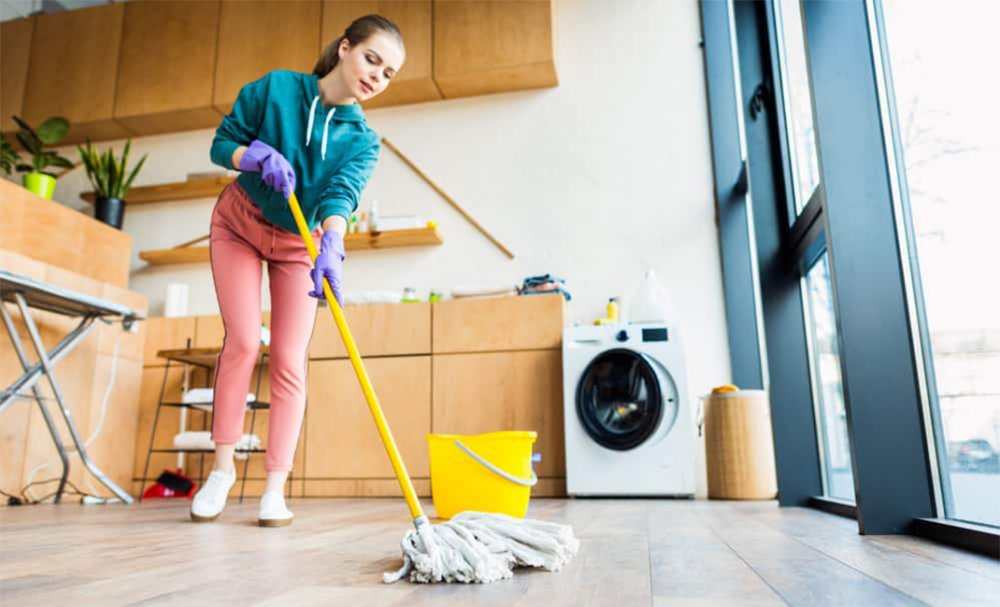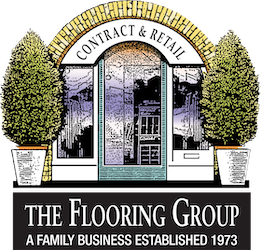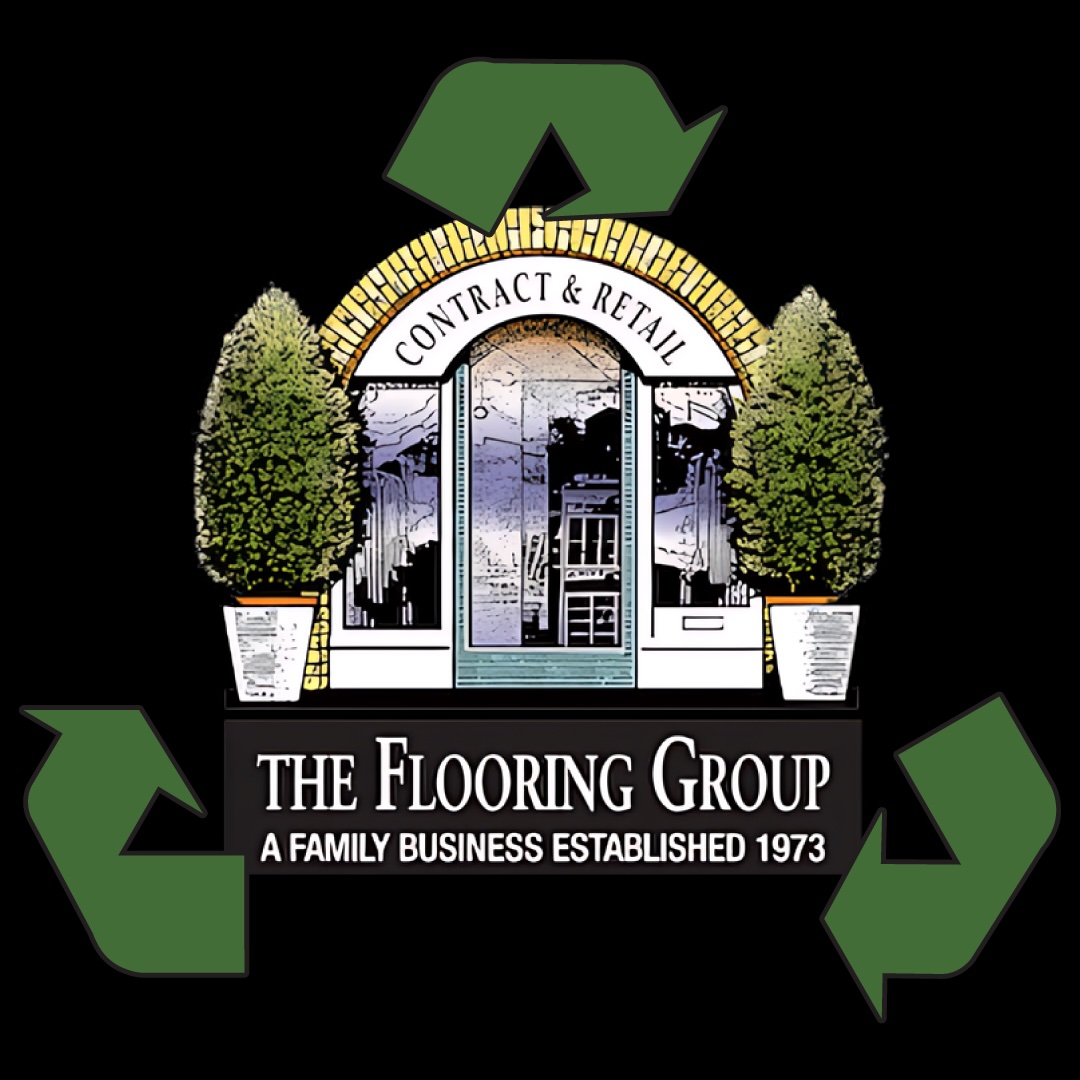The Ultimate Guide to Mopping Different Types of Flooring

It’s one thing to invest in the perfect flooring for your home, office, or business property, and quite another thing to look after it properly. Unfortunately, not everyone is as diligent in cleaning their floor as they ought to be, including when it comes to mopping.
Indeed, not everyone really knows how to mop a floor. You might have presumed it’s simply a case of getting a mop, filling a bucket with warm water, and getting on with it.
However, with there being such a broad variety of flooring types across the UK’s homes and commercial spaces, there’s a bit more you need to know than that.
So, in this guide, we will outline specific tips for mopping different types of flooring. Along the way, we’ll answer classic questions like “can you mop laminate flooring?”, “what’s the best mop for Amtico flooring?”, and many more.
With no further ado, let’s explain all.
General Tips on How to Mop a Floor
As we alluded to above, there’s a bit more involved in mopping a floor correctly than a lot of us realise. Below, then, are the basic steps involved in the mopping of any floor type:
- The initial dirt and dust removal. Vacuuming and sweeping the given area will enable you to remove a lot of the loose dirt particles on your flooring, before you get on with the “wet work” in earnest.
- Selecting the right mop. Different types of mops exist! So, the most suitable mop for your flooring will depend on such factors as the type of floor it is, how frequently you clean, and the amount of dirt you need to remove. The best mop for Amtico flooring or LVT flooring will also differ depending on material sensitivity.
- Using suitable cleaning solutions. Again, the exact cleaning solutions that you should use will hinge greatly on the specific type of flooring you have. Using the wrong “recipe” for your cleaning solution could risk damaging your floor, leaving a residue, or even producing dangerous fumes. So, you will need to be extremely careful here.
Another common risk when mopping a floor is the excess accumulation of water. This could cause damage to certain flooring types, or leave unsightly streaks.
To minimise the likelihood of this happening to you, make sure you:
- Use a good-quality mop that effectively absorbs water.
- Wring out the mop prior to mopping, ensuring it is damp, but not dripping with water.
- Research the situation for your specific flooring type. Flooring materials vary in their water tolerance levels. So, you may need to be especially vigilant in adjusting your mopping technique to avoid oversaturation.
Mopping Laminate Flooring: What You Need to Know
Let’s answer that common question, “can you mop laminate flooring?” Our short response is yes, you can! However, there are some crucial things to bear in mind:
- Laminate flooring is water-sensitive, so it should be cleaned with minimal moisture. You will need to use a damp mop rather than a soaking wet one, given the risk of excess water seeping into the seams and causing damage.
- We recommend soft microfibre mops or flat mops for the best results. Microfibre mops don’t require as much water as standard mops, and they are highly effective at picking up dirt from a laminate floor, while avoiding scratches.
Best Practices for Mopping Luxury Vinyl Tile (LVT) Flooring
LVT flooring is a popular option for high-traffic spaces such as kitchens and bathrooms.
This flooring type’s durability is a big selling point – its top layer protects well against impact damage. It is also resistant to moisture and dampness, which makes it suitable for wet areas of a property.
None of that, though, gives you an excuse to neglect the regular cleaning and maintenance of your own LVT flooring. So, here are some of the vital things to know:
- A microfibre or spray mop is typically the best mop for LVT flooring. A microfibre mop combines a gentle touch – which is crucial for avoiding scratches to the LVT surface – with effectiveness at picking up dirt and grime.
- Can you use a steam mop on vinyl flooring? The short answer to this question is “no”… if you have any wish to protect your floor. Steam mops are generally not suitable for the cleaning of LVT or other types of vinyl flooring, due to the risk of adhesive damage and warping.
- When mopping your LVT floor, you should ensure the mop is damp – not soaked – and use a mild, non-abrasive cleaner. You will need to mop in the direction of the grain, in addition to rinsing the mop head frequently.
Caring For Amtico Flooring: Choosing the Right Mop
Amtico is a brand of LVT flooring that is designed to resemble another material or flooring type such as stone, wood, or tile. It has quite rightly won a reputation as a premium flooring solution, noted for its durability and low maintenance requirements.
However, it is still recommended that you mop your Amtico floor once a week to ensure it continues looking great. Indeed, using appropriate cleaning tools is crucial for this type of flooring.
So, be sure to take into account the following things:
- When you are seeking out the best mop for Amtico flooring, you should look at those that are designed for use on delicate surfaces. This will likely mean investing in a microfibre or soft sponge mop.
- There are various other maintenance steps you can take to help preserve your Amtico floor’s finish. These include – but are not limited to – sweeping or vacuuming the floor every day, as well as placing doormats at entryways to minimise dirt and grit. You should also immediately wipe up any spills with a clean and absorbent cloth or paper towel.
Common Mopping Mistakes to Avoid
It is one thing to know how to mop a floor, but it’s also imperative to know some of the things you shouldn’t do when carrying out this task.
Classic mistakes like the ones detailed below can bring about all manner of undesirable consequences, such as unsightly streaks and even permanent damage to flooring:
- Overwetting the floor. A mop that is sopping wet poses a big risk of damage to the floor. This is why you should be aiming to keep yours merely damp.
- Using harsh chemicals. Cleaning products with ingredients that are known for their harshness, such as ammonia or vinegar, can potentially eat away at the finish of a floor. So, you should always double-check what cleaners are suitable for the type of flooring you have.
- Neglecting to rinse mops. The whole point of mopping a floor is to remove dirt rather than simply smear old dirt elsewhere around the floor. So, you will want to rinse your mops regularly to get rid of any accumulated dirt and cleaning solution residue.
Keeping Floors Sparkling: The Final Sweep
We put together this guide to emphasise the importance of knowing how to mop a floor. To reiterate: the specific approaches that you will need to take are liable to vary from one type of flooring to the next. So, we would always urge you to research the situation for your own flooring type and material before you start mopping.
By using suitable mops and cleaning techniques tailored to the specific type(s) of floor you have at your property – such as LVT, Amtico, vinyl, and/or laminate – you can help to ensure your flooring remains in optimal condition for longer.
Whether you are on the lookout for new flooring or you are seeking expert advice, here at The Flooring Group, we can serve as a useful resource. Please don’t hesitate to enquire to us today if you have any questions about residential or commercial flooring in the UK.





